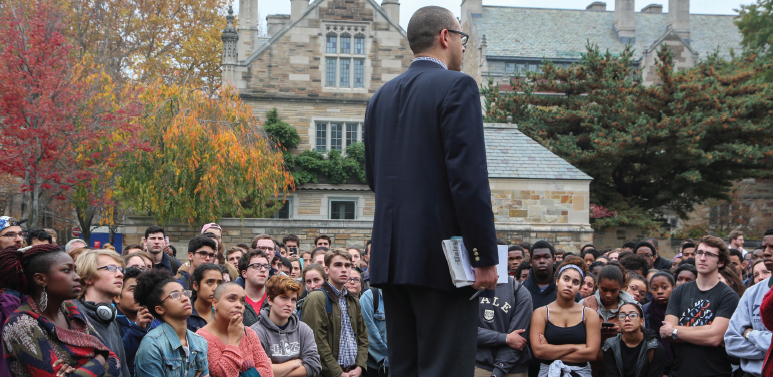Yale College’s first black grad: it’s not who you think
Yale Alumni Magazine
2014-02-28
Carole Bass ’83, ’97MSL
Mark Alden Branch ’86
In 1874, Edward Bouchet became the first African American to graduate from Yale College. Or so the university’s histories tell us—and we’ve reported it ourselves more than once.
Yet that very year, a Quaker publication from Philadelphia recognized an earlier pioneer:
“The first colored graduate of the Academical Department of Yale,” it says, “was Richard Henry Green, in 1857.” At least two other newspapers published similar items around the same time in 1874.
Green, a New Haven native who died in 1877 at age 43, seems to have been lost from Yale history. Now he has been found again, thanks to research by an archivist at Swann Auction Galleries in New York City.
“It’s a fascinating story,” the archivist, Rick Stattler, says in a phone interview. “I sort of stumbled across it by accident” while researching Green family papers that will be auctioned in April.
When he discovered that Richard Henry Green “may have been a pioneer African American student at Yale, I was a little skeptical,” Stattler says. “But it turned out to be true.”
A “Mulatto” Clerk
How Green’s race was viewed at Yale—by the college, by his classmates, and by Green himself—is unknown. Yale records don’t mention his race, and no images or physical descriptions of him have been found, says Judith Schiff, the university’s chief research archivist and author of the Yale Alumni Magazine‘s “Old Yale” column.
But the 1850 US census lists Richard Henry Green as a 17-year-old “mulatto” clerk, living in New Haven with other “mulatto” family members. The 1860 census records Green’s race as “black.”
And in 1874, while Green was still alive and with Edward Bouchet seemingly making history, somebody at the Society of Friends in Philadelphia knew that Green was actually “the first colored graduate” of Yale College…
Read the entire article here.

